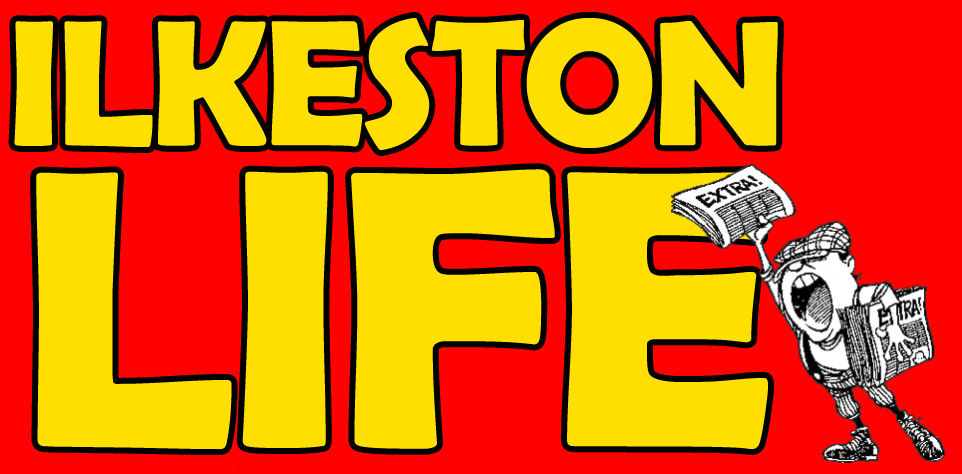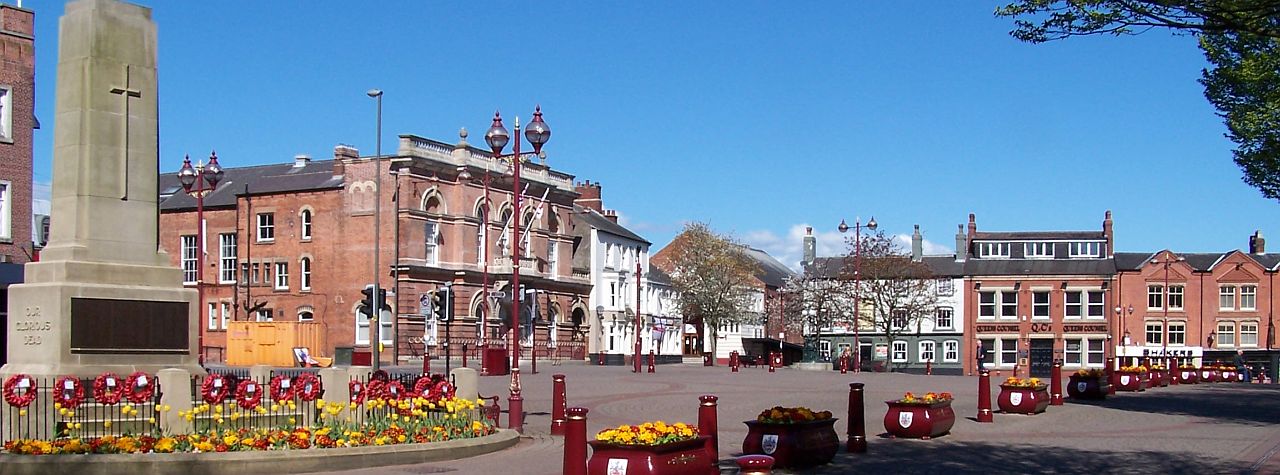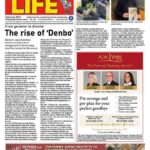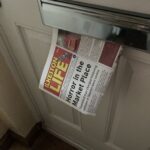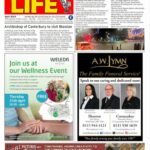This article was first published in the September 2015 issue of Ilkeston Life
Ilkeston, affectionately known as ‘Ilson’ by its residents, is my town. I was born in Nottingham but have lived all my life in Ilkeston, never moving more than ten minutes away from the family home on Greenwood Avenue.
Ilkeston is one of the few places left where you will still hear the East Midlands dialect being used. Where they still greet their friends with, “Ey up me duck.” It certainly is not the prettiest town in Derbyshire, far from it. But it stands on a lofty hill overlooking the beautiful Erewash valley. No matter what road you take out of town it is only a few minutes to open countryside.
The Nutbrook walking and cycling trail winds its way through Ilkeston, some of it on the route of the pit trains which transported the coal from the various coal mines that were once one of Ilkeston’s main industries along with lace making and of course Stanton Ironworks.
All but the lace making is now gone from Ilkeston and Ilkeston is now much cleaner perhaps, but a poorer place without them. When I was a girl in the sixties, there was always work for everyone who wanted to work. Those days most people did want to work. In fact they had to work, or they did not eat.
Founded in the 6th century AD, Ilkeston was first called Tilchestune, after a chieftan named Elchun. It was to be found in the Doomsday Book in 1086 under this name.
In 1252 it was deemed big enough to be granted a Royal charter from King Henry III for a weekly market and an annual Fair. These have both survived to the present day. The Annual Charter Fair is older than the Nottingham Goose Fair, and it is one of the largest street fairs in the country. Indeed in Europe! In 2015 the Fair celebrated its 763rd year and is always well worth a visit. The Fair is always held two weeks after Goose Fair in the month of October.
Having been to most of these annual fairs in my sixty-seven years, I can tell you the weather can be anything from sunny and warm to freezing cold winds and pouring rain. I do not think in my time it has snowed, but there could be time yet.
Some Ilkeston residents hate it, but the majority love it. There are always new babies to take in their pushchairs to see the lights – toddlers for Grannie and Grandad to take on the smaller rides – schoolchildren to take on the Big Horses. This was always my favourite ride as my dad used to take me on them from being very little. I used to sit in front of him on the horse as it galloped round and round.
Then as the children grew there would be teenagers going alone for the first time to meet up with their mates. It is great family fun for all with a cacophony of noise and laser lights to light up the night sky for miles around.
Our Market, still an outdoor market, still in the same place as when I was a girl, isn’t what it was. It used to be chocker block with stalls. My favourite stalls were the second hand book and comic stall where mum and I used to go every week to exchange her romantic fiction and my Superman/Spiderman comics for a few pence a time. And the fabric stall where I used to buy threepenny bundles to make my doll a new dress. Nowadays there are many gaps between the stalls selling fruit and vegetables, meat, fish, bread, cake, cards, plants, and fashion and the atmosphere does not feel the same to me. I guess that is just an age thing.
It is good that it is still there, after all these centuries and that the stall holders, still want to ply their trades out in the open no matter the weather. Steadfastly guarding our Market Place is our oldest building, St Mary’s church. St Mary’s was built in the 12th century.
When it was first built it had a lead covered steeple, which was destroyed in a hurricane in 1714. This was then replaced by the tower we have now in 1731. The knave of the church was extended out towards the market place in 1909. How many christenings, marriages and funerals has this church presided over the centuries? My mum and dad were married there as was my youngest daughter.
The only form of transport at the moment out of Ilkeston, if you haven’t got your own transport, is the local buses. Back in 1773 communication links were beginning to appear with the Erewash Canal route from Nutbrook to Nottingham on the narrow boats. In 1829 the first long distance coach, “The Spectacular” made its journey from Ilkeston to Nottingham and later in 1853 the Erewash Valley Railway was constructed. This facilitated the rapid growth of the main industries in the area, coal and lace.
The population grew rapidly from 2,000 in 1800 to 19,000 in 1891. The population of Ilkeston in 2001 was 37,500. Yet the last of our three railway stations in Ilkeston was shut in 1967. The closure of this last line left the magnificent wrought iron structure of the Bennerley Viaduct, 443m long by l9m high, standing isolated and alone in the verdant green pastures of the Erewash Valley.
There have been a few attempts to get back a rail link from our town, and now it seems it is about to happen—despite the Newts.
Back in 1831 the railway brought in many customers for the famous Ilkeston Spa Baths situated at the end of Town Street and attached to the Rutland Hotel. This is where Ilkeston’s main Street, gets its name, Bath Street.
Thomas Potter had the Baths built and they were popular around the time of the Harrogate and Bath spas. Just before the 1900 they lost their popularity when people got worried about contamination from the proximity of local mining activities.
Ilkeston has had its share of Royal visits over the years. On the 28th June 1914 King George V and Queen Mary came to visit for their Silver Jubilee and the Vauxhall Gardens were opened. The Vauxhall Gardens were used for many events such as the Circus, Balloon descents, and Firework displays.
The King and Queen visited Shipley Hall when they came to Ilkeston. My husband’s great grandfather had the honour of opening the gate for their carriage when they arrived.
The Miller Mundy family owned Shipley Hall at the time and also Shipley colliery. This was just one of the many collieries around, and the main source of employment for most men in the area, up until the 1960s when the closures began. My grandfather, Percy Brown was a collier and so were most of his sons. My grandfather also worked tirelessly for the community of Ilkeston and was rewarded by becoming Mayor of Ilkeston in 1961.
